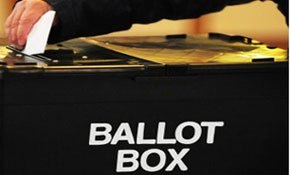Has the time come to reassess the influence of social class on values and voting behaviour? Asks, YouGov President, Peter Kellner
Fifty years ago, it was plainly what mattered most to voters deciding which party to support. As late as the 1980s, political scientists had good reason to wonder if Labour could ever win again, as its voter-base shrunk. The trend seemed unstoppable: manual, especially industrial jobs disappeared, to be replaced by white collar, office-bound jobs; and there was no reason to expect the trend to stop, let alone reverse. And indeed it has. Whereas working class voters outnumber middle-class voters by two-to-one in the sixties, middle class voters now have a four-to-three numerical advantage.
Want to receive Peter Kellner's commentaries by email? Subscribe here
These trends did not prevent Labour winning its two biggest landslide victories in 1997 and 2001. Tony Blair and “New Labour” managed to win over millions of middle class voters. But now, voices on the Left are saying that labour has strayed too far from its working class roots, and needs to change course.
YouGov’s research for Progress throws new light on this argument. It consists of fresh analysis of aggregate data collected over the summer and early autumn, and new questions asked specifically for Progress.
Take the aggregate data first. We asked more than 15,000 people where they placed themselves on a scale from left to right. This is what we found:
| In politics people sometimes talk of left wing and right wing. How would you describe yourself? | ||||
|---|---|---|---|---|
| Social class | |||
| AB | C1 | C2 | DE |
| % | % | % | % |
Very/fairly left-wing | 16 | 16 | 12 | 13 |
Slightly left-of-centre | 20 | 17 | 14 | 15 |
Total left | 36 | 33 | 26 | 28 |
Centre | 17 | 16 | 24 | 22 |
Slightly right-of-centre | 20 | 16 | 11 | 11 |
Very/fairly right-wing | 15 | 13 | 11 | 19 |
Total right | 35 | 29 | 22 | 20 |
Don't know | 12 | 22 | 27 | 31 |
As those figures show, middle-class voters are more likely to describe themselves than working class voters as left-of-centre. But they are also more likely to describe themselves as right-of-centre – the biggest difference between the classes is the number of don’t knows: one in three DE voters, but only one in eight AB voters. If we take the difference between left and right, then there is a one point lead for the Left among the middle classes, and a larger, 8-point, lead for the Left among DE voters. So, in relative terms, there is a slightly greater overall tilt to the Left among DE voters – but the larger truth is that social class plays only a marginal role in determining how left- or right-wing we are.
So much for ideology; what about policies? YouGov tested seven on which social and economic progressives differ from social and economic conservatives. As far as the public as a whole is concerned, clear majorities are “progressive” on three (workers on the boards of large companies, nationalising Britain’s railways and gay marriage), clearly anti-progressive on three (topping immigration, ending overseas aid and opposing higher taxes to protect public service) and divided on one (reducing unemployment benefit).
What holds for the nation as a whole, also holds for Britain’s working class. On four of the seven issues, working-class and middle-class views are very similar. As for the other three, the differences will depress anyone who thinks that progressive views have a special appeal to working class voters. Whereas middle class voters divide evenly on immigration, working class voters divide more than two-to-one in favour of stopping ALL immigration. Likewise with overseas aid: middle class voters divide evenly on whether to end it altogether, while working class voters back the idea by two-to-one.
On welfare reform, the picture is a little more complex. Overall, middle-class voters divide 53-38% in favour of reducing unemployment benefits, while working-class voters divided 45-40% against the idea. However, when we look separately at skilled workers (C2) from those in unskilled jobs or relying on state benefit (DE), we find that the C2s are every bit as keen on reducing benefits as the Abs and C1s; it’s the DEs who come out against the idea. In short, opposition to lower benefits is greatest among those for who most fear losing out, or are currently relying on state benefits. Scant signs there of working class solidarity.
Finally, we listed all seven propositions and asked people which two, if any, they would MOST like to see implemented. The top three are the same for both middle-class and working-class respondents: stopping all immigration, ending all overseas aid and reducing unemployment benefits. And the three “progressive” policies come last among both groups. From a progressive point of view that is bad enough. But there is worse to come. If we separately average out the top three and bottom three causes, the range is fairly modest among middle-class voters: 19% progressive, 28% anti-progressive. But when we do the same calculation for working-class voters, the range is vast: progressive 13%, anti-progressive 37%.
To observe all this is not to argue for Labour to adopt a reactionary agenda. Any attempt to abandon principle and embrace the prejudices of C2 and DE voters would be counterproductive, as voters would smell, and reject, the cynicism involved. Rather, it is to point out that it is worth understanding where people actually are, instead of where we might wish them to be. Labour remains more popular with working class than middle class voters; but that popularity derives far more from tribe and tradition than values and ideology.
See the full survey details and results here
This commentary appears in the November issue of Progress
Want to receive Peter Kellner's commentaries by email? Subscribe here









